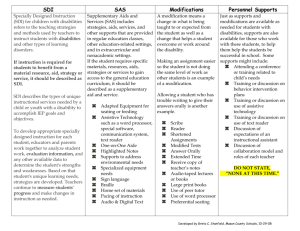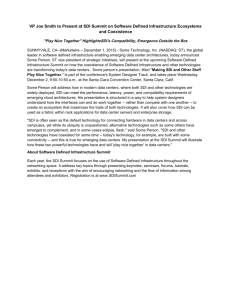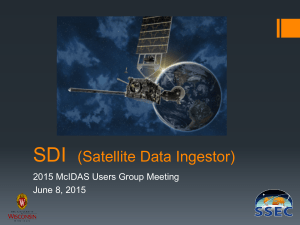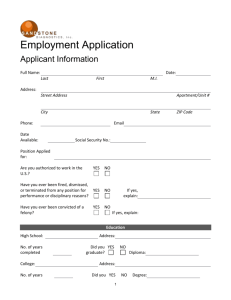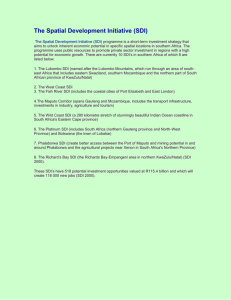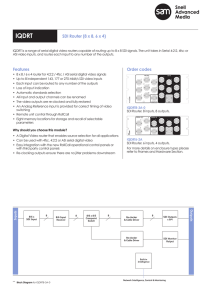SDI and Satellite Status Dave Santek McIDAS Development 27 - 28 October 2005
advertisement
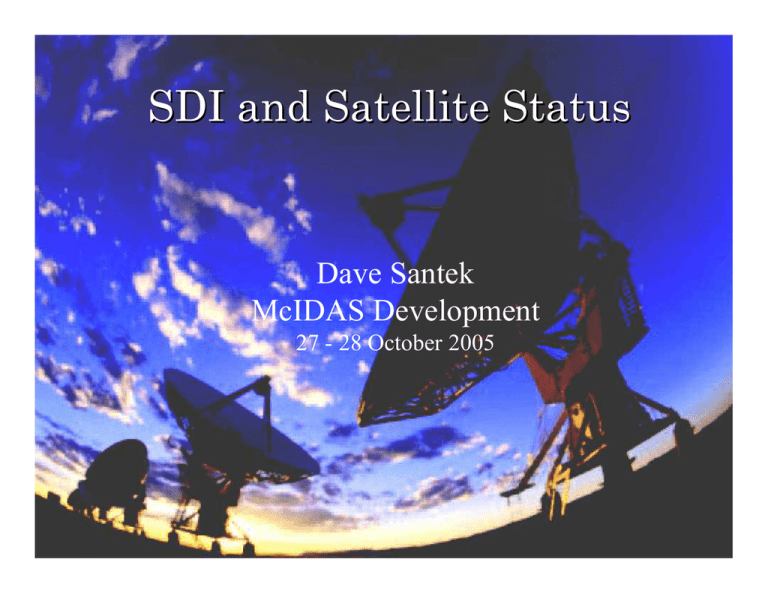
SDI and Satellite Status Dave Santek McIDAS Development 27 - 28 October 2005 Overview SDI Redesign NOAAPORT Status Satellites and SDI Status Why Redesign? Current configuration – Based 8 year-old technology – Compatible PCs are difficult to find No 5v PCI slots on newer servers – Current GOES series will be here until at least 2012 – Data rate limited to 15 Mbits/s; new satellites will have data rates twice that Hardware Configuration PC/104-Plus 1 GHz CPU Boot from compact flash Ethernet: 10/100/1000 BaseT Connectors for monitor and keyboard Mounted in 2U rack box Software Configuration Linux – New device driver written Ingestor software modified slightly Server software is unchanged Configured as a standalone ingestor/server or data written to external disk NOAAPORT DVB-S began in early 2005 – SDI not used; ingests on standard PC – Interface to Novra receiver via Ethernet – Unidata-written code takes raw data stream →LDM → McIDAS-XCD – Instructions on configuring hardware and software: http://www.ssec.wisc.edu/mcidas/software/xcd/dvb/ SDI Status for Current Satellites GOES: no change; adapting servers for future satellites Meteosat-5 and –7: no change POES: no change through NOAA-18 FY-1D: – Polar orbiting satellite from China – Receiving at SSEC SDI Status for Current Satellites DMSP: no change; this continues to be difficult to support without being able to receive the signal directly Meteosat-8: no SDI FY-2C: Chinese geostationary – No SDI; data available to McIDAS MTSAT HiRID format (remapped) – 2 more bits for IR channels – Additional 3.7 µm channel – SDI upgrade needed for additional channel and bit resolution HRIT format (native) – Higher spatial resolution than HiRID – Work just beginning on ingestor and server Future Polar Satellites We are monitoring the status and data delivery of future polar orbiting satellites MetOp, NOAA-N’, NPP, and NPOESS. We expect these to have a Direct Broadcast mode and are investigating having SDIs available.
